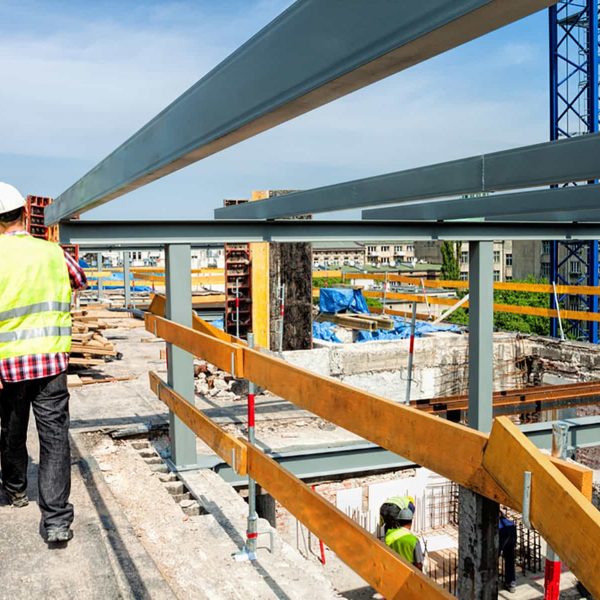People often assume that the cost to acquire a property is simply the cost of the property and any related closing costs. They overlook the significant time and resources that go into conducting due diligence on the property – costs that are incurred well before an investor even makes an offer to purchase. After an offer is accepted, tens of thousands of dollars might be spent on further due diligence prior to close.
The importance of a thorough due diligence process should not be overlooked. Due diligence is the careful, thorough evaluation of a potential investment. It helps the new buyer gain a complete picture of the multifamily property’s current condition, need for repairs or upgrades, and its overall financial performance. It includes an evaluation of the physical asset as well as its financials.
A robust due diligence process can take anywhere from two weeks to two or more months to complete.
In this article, we look at five of the most important things for investors to consider when doing their due diligence on an apartment building.
5 Due Diligence Items for Apartment Investors to Consider
1. Hyperlocal Market Conditions
Before moving forward with any investment, large or small, investors should have a strong grasp of the hyperlocal market conditions. Look at factors such as job growth, population growth, new household formation, the quality of schools, and crime rates. Regarding crime, look not only at crime rate, but also type of crimes (violent vs. property). It does not hurt to speak with the local police department to get a better handle on local crime and what’s driving that activity.
An analysis of hyperlocal market conditions should also look at existing and new/planned competition. Consider the quality of that competition. Have buildings all been renovated, and if so, to what degree? What rents are they getting? What is their renter profile? Look at the competition’s vacancy rates, management quality, and amenities. Based on the competition, do you think the property you are considering could do better and if so, at what cost and for what future rents? Remember, competition is not inherently negative. If your peers are investing in the marketplace, it could lead to gentrification that in turn helps all multifamily owners do well.
2. Building Replacement Costs
In real estate, there is a concept referred to as “replacement risk”. Replacement risk is the risk that a property will become functionally or economically obsolete due to the arrival of newer properties with more amenities at the same or similar rental prices. To understand the scope of replacement risk, investors want to have a handle on the property’s replacement cost. Replacement cost is the amount of money that it would take to rebuild a similar building using current prices for building material, land and labor (which is different from the property’s market value, or the amount someone may be willing to pay for the property).
Those looking to invest in existing multifamily assets will generally want to try and purchase the property for below the building’s replacement costs. This is because, all else considered equal, someone will generally opt to lease an apartment at a newer building than one of an older vintage.
Buying a building below replacement cost gives the new owner an advantage: if they assume they will rent units for less than their competition at newer buildings, then they know they won’t be competing with new construction. New construction is a different product type that will attract different tenants. It also leaves room to execute a value-add strategy that unlocks additional value for their investors.
3. Cost of Property Improvements
It is important that any prospective buyer spend significant time learning about the property’s existing condition, including what improvements have already been made and what cosmetic and/or capital expenditures are still needed.
Evaluating a property’s condition is easier said than done. An investor might bring their property manager with them on an initial property tour. An experienced owner/operator and their property manager should be able to make basic observations about the quality of the building, its systems (e.g., the roof, HVAC system, pavement, landscaping and so forth). However, there are occasions where third-party contractors are also worth bringing in to evaluate the property. For example, someone might have an elevator contractor analyze the owner’s elevator maintenance records and then inspect the elevators, shafts, etc. to determine whether the elevators will need to be replaced and if so, when. Something like elevator replacement can be a significant capital cost that should be accounted for during the due diligence process.
Contractors can also help spot potential red flags. For example, at a property with unusually high plumbing bills, it may be worth having a specialist come in to scope the plumbing. It may be, for example, that the building’s entire plumbing needs to be replaced or re-worked, which would require opening the walls in all of the units – a cost and headache that many investors would rather avoid.
In addition to physical improvements, the due diligence process should also look at operational improvements. Someone might, for example, have one of their team members call the leasing office to inquire about a unit. This will provide insight into the quality of the leasing experience. If service is poor, the prospective buyer might consider bringing in a new leasing team upon close. An underperforming leasing team could also be indicative of higher-than-average vacancy rates, something that could otherwise be improved under new management.
4. Financing Costs
Investors will also want to consider the state of capital markets and their ability to obtain advantageous financing for a deal. During the due diligence process, an investor will want to get in touch with their existing lenders to explore what type of financing is available as the cost of financing can have a big impact on overall returns. A commercial mortgage broker can be a great resource when trying to identify the most appropriate financing for any specific deal.
It is important to understand that each deal is different and will warrant different types of financing. Not every deal should have 60- to 65-percent loan-to-value using fixed-rate financing. For example, a project with a heavy value-add strategy might be better suited with a floating rate loan and with potentially higher leverage because the investor is essentially overpaying for the property based on current revenue, and then will use that financing to upgrade the property and bring revenue in line with the market. At that point, the owner can recapitalize the property based on its stabilized value, thereby generating enhanced value and returns for investors.
In any event, a prospective buyer will want to carefully consider their financing strategy and then explore what loan products are available to meet their needs and business plan objectives.
5. Political Considerations
In addition to looking at the local market, the physical property and the property’s financials, a prospective investor will also want to consider various political dynamics. At a local level, investors should consider whether it is relatively easy or difficult to permit new apartment buildings. Ideally, investors will want to buy property in an area where demand is high, supply is low, and permitting new development is politically challenging. This will keep the supply/demand dynamics in the buyer’s favor. Areas that are more development-friendly are at greater risk of seeing an influx of new construction that could have downstream impacts on existing owners.
At both a state and local level, investors will want to consider whether rent control or other affordable housing policies are being considered. Investing in rent-controlled properties is not inherently a bad thing, but it presents some challenges that buyers will want to understand. Moreover, an investor will want to be sure they are not investing in a free-market area that has rent control policies being contemplated, as the enactment of those policies after-the-fact could have a dramatic impact on the buyer’s pro forma assumptions.
Lastly, at the federal level, a sponsor will want to consider any changes to tax laws that might be being proposed. For example, many investors will buy a property with the intention of accelerating depreciation and reaping certain tax advantages that would make an otherwise “okay” investment a “great” investment. If those tax laws change, it could have an impact on what a buyer is willing to pay for a property.
Conclusion
The due diligence process that an investor undertakes on any specific multifamily opportunity is not linear. They may begin with a cursory, high-level analysis that only develops into a full-blown due diligence process if the deal otherwise checks out early on. The due diligence process may be halted in its tracks if there is a specific, deal-breaking discovery.
Assuming a deal continues to move forward, the importance of a robust due diligence process becomes paramount. Understanding the nuances of the property (physically and financially) as well as the local market is essential for investors looking to create a detailed pro forma that aligns with their intended execution strategy.
If you’re considering investing in multifamily real estate, contact us today. Our team would be happy to review the deal with you and discuss what financing options may be best suited for your needs.


